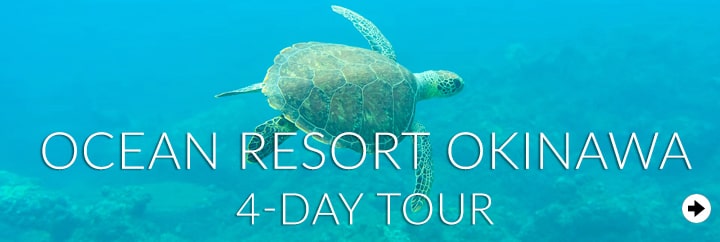Okinawa, Japan Feb. 22 Sat 2:56PM
Okinawa is gaining popularity as a must-visit beach destination. And what's not to like about it? Gorgeous beaches, friendly people, relaxed atmosphere, and amazing wildlife. As gorgeous as the islands are, it's important to be aware of the environment that you will be in. There is beauty aplenty, and the atmosphere and vibe of Okinawa tends to be very relaxed. That being said, stepping into a new place requires some caution and prior research, to make sure you're as safe, cautious, and respectful of the place and life around you. As amazing and diverse as the wildlife and fauna is, being prepared and well-informed is a great way to be a responsible traveler. As amazing as the creatures that live in Okinawa are, there are also some powerful and even deadly creatures as well. Fore-knowledge is power!
1. Jellyfish
As with many island destinations, you need to be aware of ocean inhabitants. Many people enjoy Okinawa for the gorgeous waters, often clear and teeming with life, and as such, people often tend to go snorkeling. While an exciting experience where you get to discover the biodiversity in the oceans of Okinawa, there are a few creatures to watch out for. One of the main creatures and most commonly seen is the jellyfish.
Jellyfish numbers in the waters of Okinawa is also on an increase as well, and one of the species of jellyfish that you can find is the infamous box jellyfish. Box jellyfish (habu kurage) are especially common in the summer, and between May and October. These jellyfish are more commonly seen in the artificial beaches, and are known for packing a nasty, sometimes fatal, sting. They tend to be quite long from the top down to the tips of their tentacles.
However, should you go swimming in the waters, don't fear. Often there will be signs posted on the beach if a swarm has moved in, and they are usually not a permanent resident as they also have migration patterns. Often the lunar schedule is also a good indicator of when box jellyfish may be the most prevalent, as they often show up after a full moon. You can also wear protective clothing like long sleeved rash-guards. Should you get stung, stay calm and do not rub the affected area. Ask a lifeguard for assistance. You can also a lot of undiluted vinegar (only for the box jelly, vinegar may worsen other stings), gently remove the tentacles, and cool the area with clean, cold water for the pain.
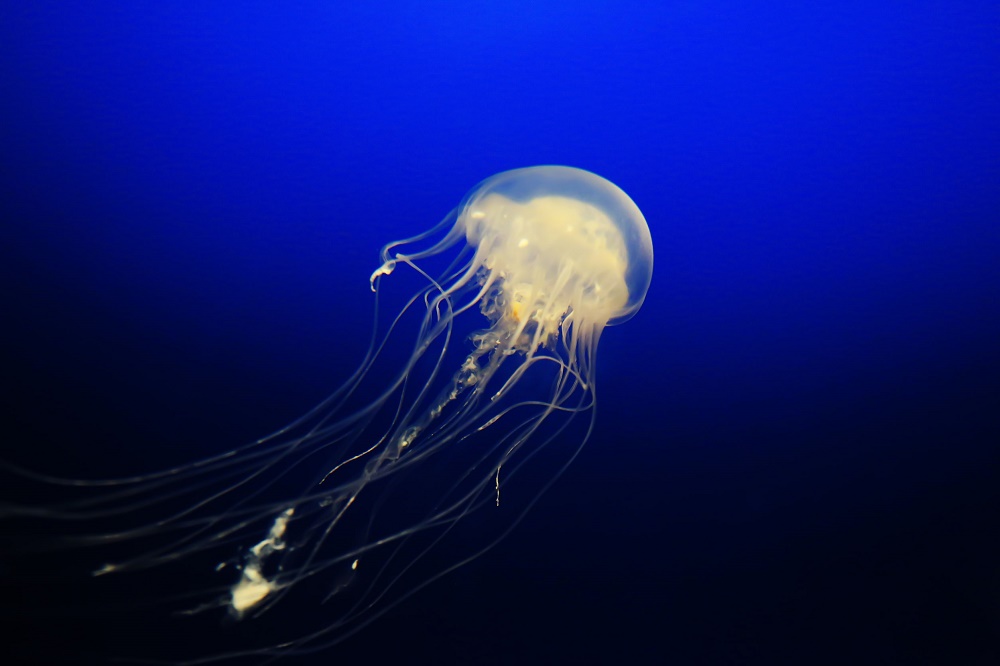 Jellyfish in Okinawa
Jellyfish in Okinawa
2. Habu Snake
The Habu Snake is probably the most well-known and talked about venomous creature living in Okinawa. The pit viper snake is feared as its venom is potent, although antivenom is usually available on the islands where the snake is found. The snakes live in the jungle and grassy areas as well as in trash and wood piles, of Okinawa, however they are said to not be on all the Okinawan islands. (There have been unconfirmed sightings on all the islands even so) They are particularly active in the summer at night, with their diet mainly consisting of rodents.
Snake sightings are rare, although some people try to get a glimpse of the snake through hiking tours. While catching a glimpse of the elusive and notorious snake is exciting, please exercise caution. Bites often happen on night walks, when the snakes are active and the human eye is less sharp. It is recommended to wear some snake boots if you're planning on hiking, a light source like a flashlight, and do not attempt to handle the snake. The Okinawan Habu snake usually has a greenish yellow triangular head, with a white belly and some black/dark brown markings on its back, whereas the silver habu is more silvery-brownish in color with darker brown markings. There are also albino habus and Taiwanese habus in Okinawa as well. With all of the snakes, just watch out for a triangular shaped head, and if you see one, keep your distance.
If you do happen to get bitten, the area will most likely start to swell and become painful. Stay calm and do not run or attempt to suck the venom out. An elevated heart rate can cause the venom to circulate faster. If you can, get to the nearest hospital by car and as quickly as possible.
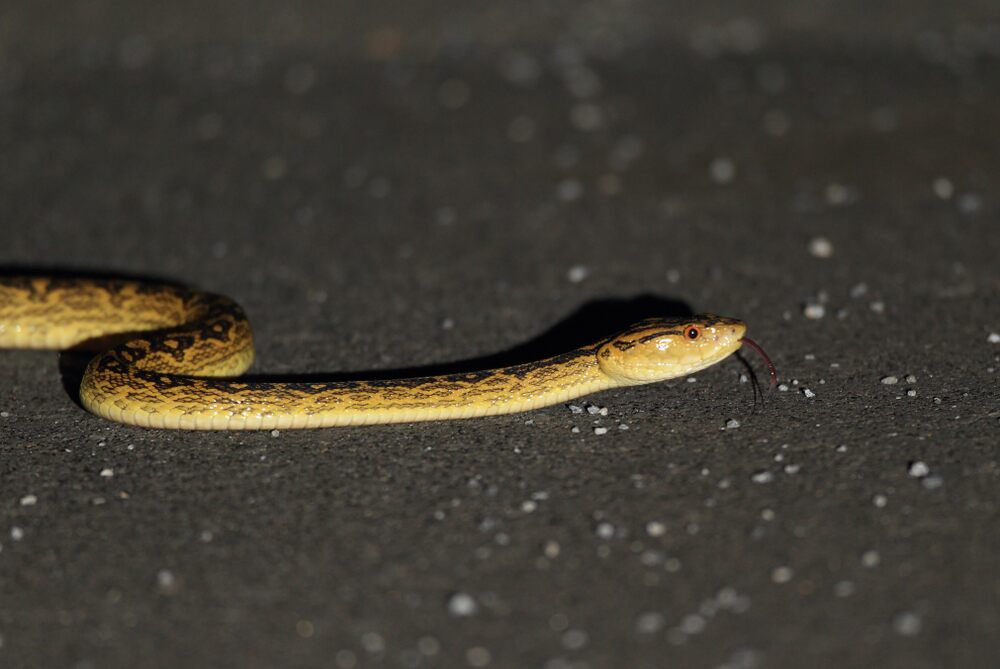 Okinawan Habu Snake
Okinawan Habu Snake
3. Iriomote Cat
The Iriomote cat may be the cutest and most cuddly looking animal on this list. This animal is one to watch out for as they are sometimes mistaken for the common house cat. However, this animal is part of the leopard family, and should not be confused with a domesticated cat. Iriomote cats are critically endangered and are respected by most of the locals here. The amount of visitors to the island also create a threat to the population of the animals, so please be cautious and respectful of the animal should you come across one. Do not attempt to handle or feed one, and if you do want to catch a glimpse of one, please respect the animals space. Be careful if operating a vehicle too. And if you go out trying to catch a glimpse of these beautiful cats, you may get lucky and see one of the animals swimming in the waters of the island, as they love a good swim!
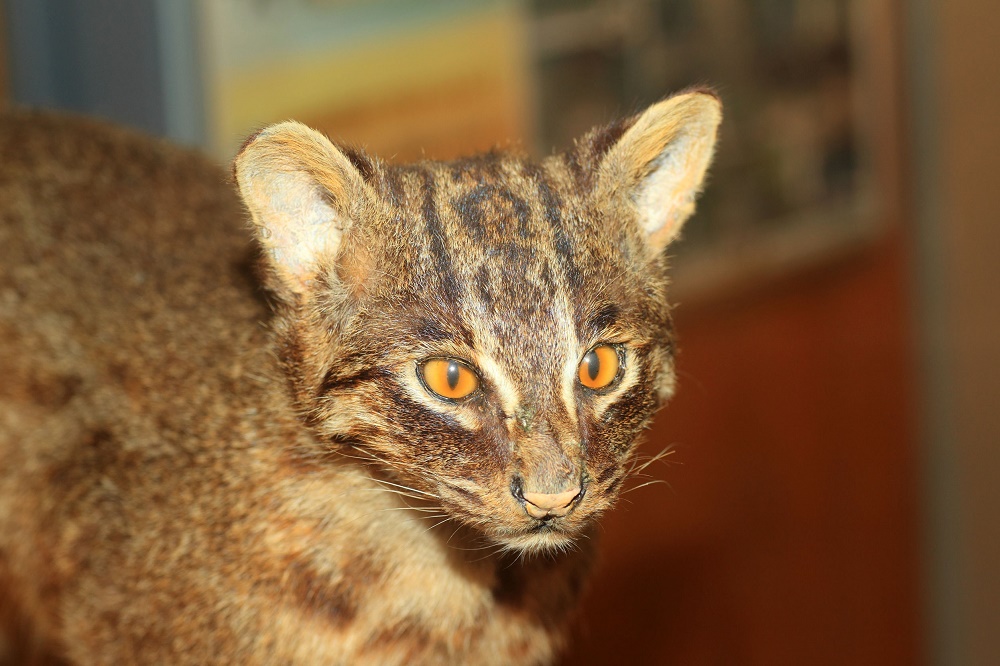 Iriomote Cat
Iriomote Cat
4. Sea Snakes
The habu snakes aren't the only types of snakes to watch out for in Okinawa. There are also sea snakes in the waters of Okinawa in particular are known as the erabu umi hebi or black-banded sea krait. These snakes are usually found in coral reef areas, and have a small head and a striped appearance. The snakes are highly venomous, but bites are extremely rare and only happen when provoked. Not all of the snakes produce fangs, and they are usually shy creatures that will more likely swim away from you.
Should you be unlucky as to be bitten, the bites often start off painless with little swelling. More serious symptoms occur soon thereafter, so getting to a hospital as soon as possible is important. However, as intimidating as these creatures may seem, some people in Okinawa also consider the snake a delicacy and make a soup with it.
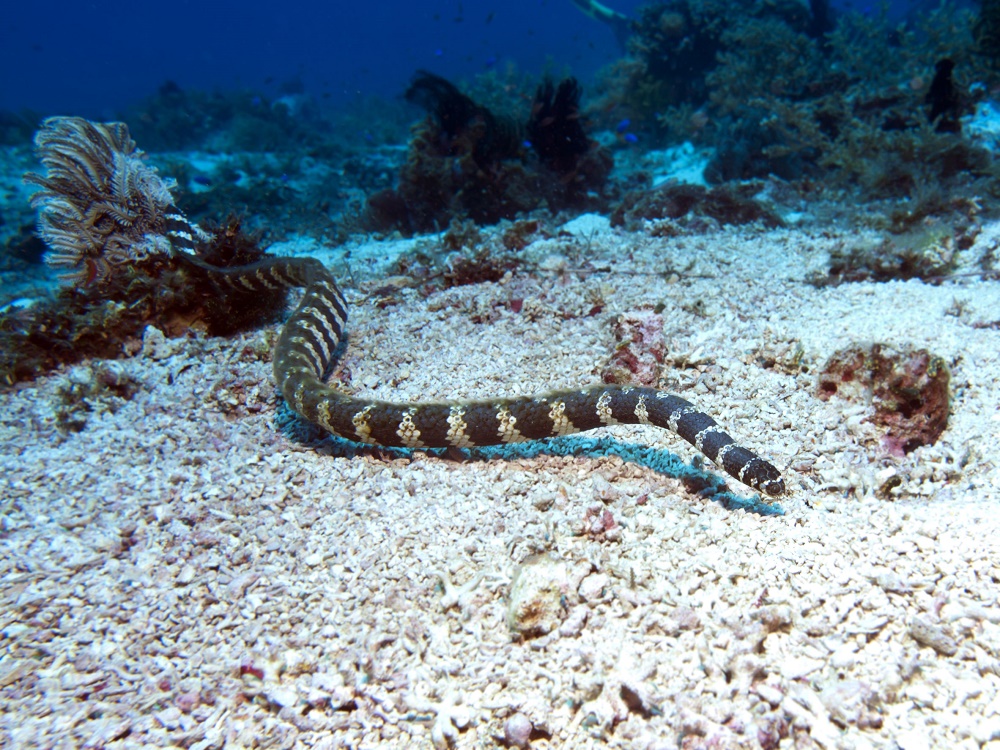 Banded Sea Snake
Banded Sea Snake
5. Sea Turtles
Sea turtles have long been a beloved and widely protected marine animal. In Okinawa, there are three main species of sea turtles that can be found. Of those three, the hawksbill turtle is critically endangered. While these turtles are not necessarily dangerous to people, the population is still fragile. They are certainly something to watch out for as seeing one is a privilege! As with all creatures, but especially of endangered species, use special care and caution should you see one.
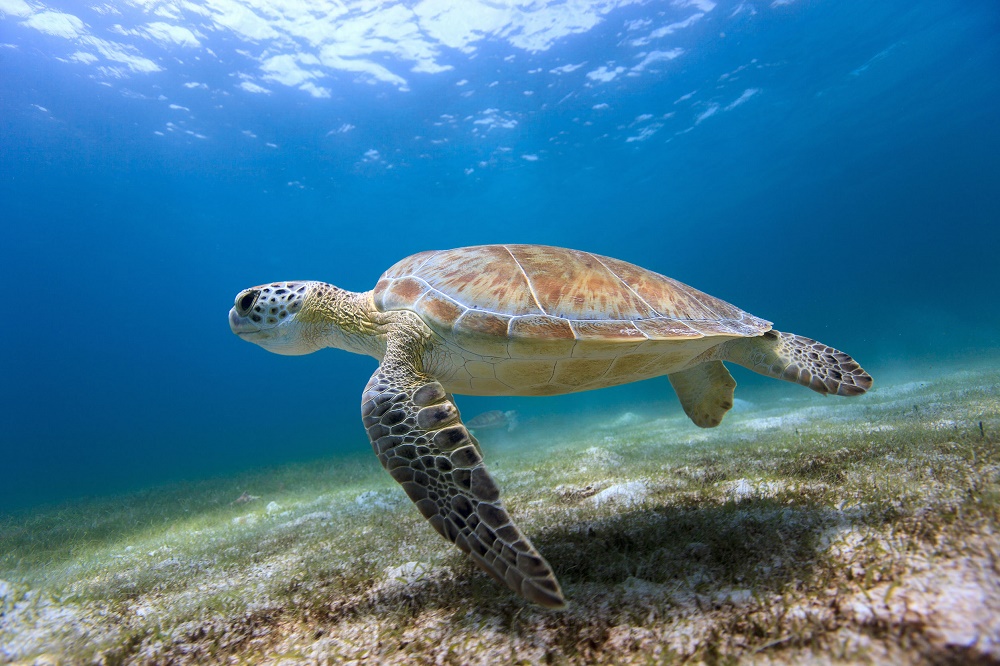 Hawksbill Sea Turtle
Hawksbill Sea Turtle
6. Lionfish
The ocean can sometimes be a little bit daunting as it's so big, relatively unexplored compared to land, and visibility is much lower. As such, when snorkeling and scuba diving, and even just wading the waters, it's good to take some extra precaution. The lionfish is a commonly spotted fish in the waters, but you do not want to step on one of these. On its dorsal fin, there are spines that contain venom and create a painful sting.
If you happen to see one in the waters, keep a distance away. Also watch where you step as they are sometimes found close to the rocks. If you do happen to get stung, make sure to remove any spines, wash the area with soap and clean water, and soak the affected area in hot water. It's also important to seek medical help.
 Lionfish
Lionfish
7. Geography Cone
Another species that can be found listed on many Okinawa information sites to watch out for is the Geography Cone or Geography Cone snail. While many cone snails are venomous, these species of snail are particularly dangerous because of its beautiful shell that entices many to pick them up. These snails have the ability to produce a needle like proboscis from its mouth that contains venom. To make matters worse, the venom is analgesic meaning you most likely will not feel the pain or register the severity of what happened should you be stung.
The venom in this species of cone snail is particularly toxic and has been known to cause fatalities. When in the ocean, be careful where you step, and don't pick up random sea animals. A good rule of thumb when it comes to nature is to let it be.
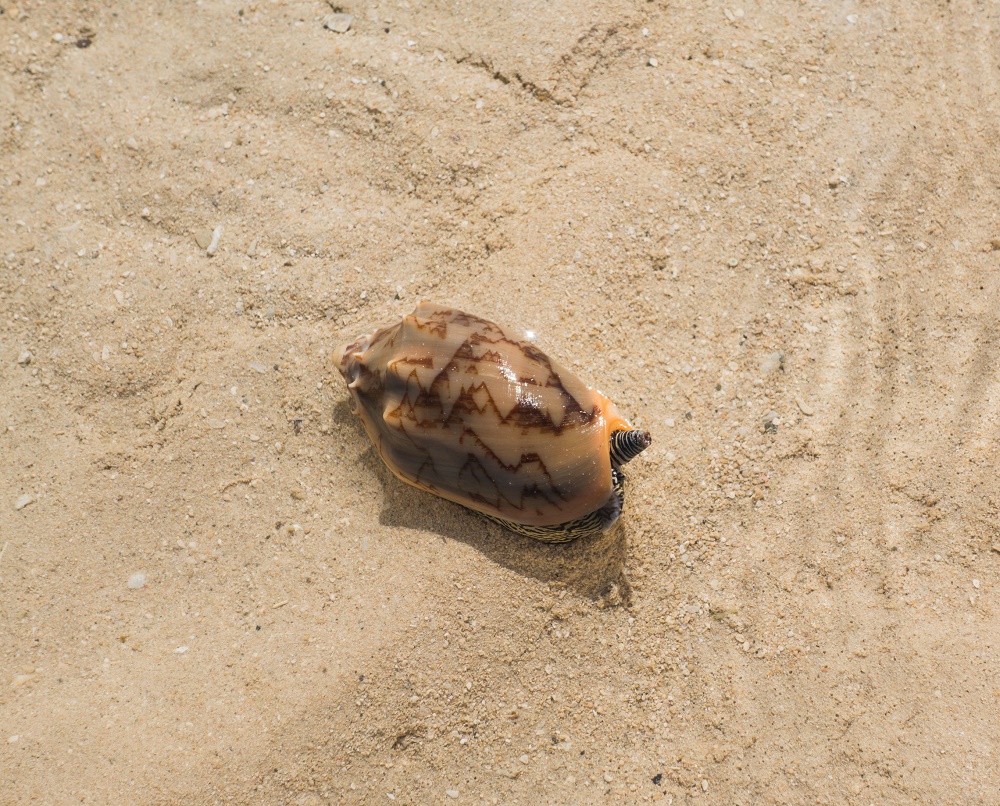 Cone Snail
Cone Snail
With a place as biodiverse as Okinawa, it's undoubted that you will encounter all sorts of species. Of course, there are far more wildlife species in Okinawa than is listed on the list including species of endangered native birds, many more species of snakes both venomous and nonvenomous, and many more creatures in the sea including venomous ones. For those that love wildlife, it can be quite exciting to come across some animals including some more elusive species. However, it's important to be aware of the creatures and their individual power, as well as take care to protect the creatures as best we can. Stay respectful of the environment you're in and enjoy the beauty of Okinawa.
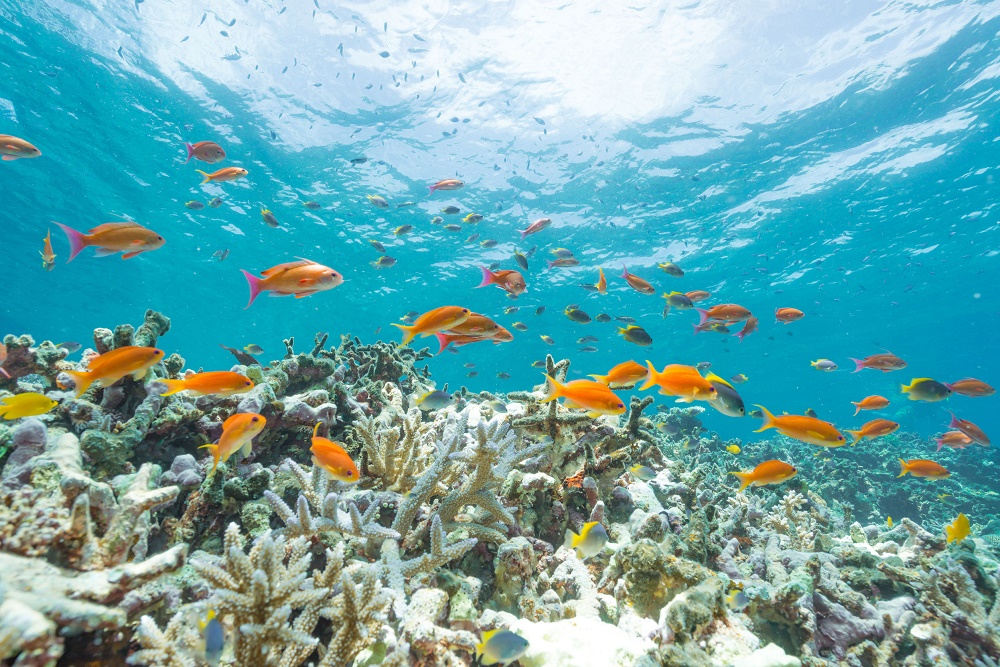
Read More on the Wildlife of Okinawa: https://top.his-usa.com/destination-japan/okinawa/the_wildlife_of_okinawa.html


